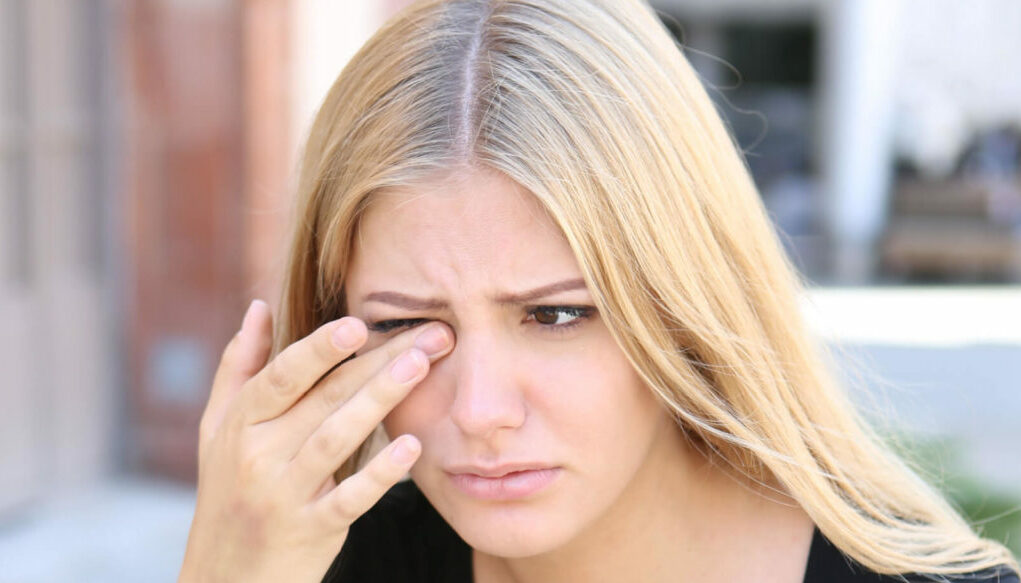
Do you observe haziness in your vision or excessive tearing in your eyes? This might indicate a risk of keratitis. It is a disease in the cornea of your eye, a transparent dome-shaped part of the eye that allows light entry. Inflammation in the cornea may develop ulcers, causing a corneal ulcer or keratitis.
Keratitis can be triggered by any infection by the invasion of the virus, bacteria, fungi, parasite, injuries, or any underlying health conditions. When left untreated, this can lead to severe complications, resulting in permanent vision loss.
Immediately seek medical attention if you observe redness, pain, light sensitivity, blurry vision, or any other eye difficulty.
In this blog, we will dig out expert tips and insights for preventing and treating keratitis to protect your vision. You will also learn about the factors that increase the risk of this eye condition.
Factors Increasing Keratitis Risk
Even if you have identified the symptoms of keratitis, here are some factors that may increase its chances:
Low Immunity
You will likely develop keratitis if your immunity reduces due to any medications or disease.
Contact Lenses
Wearing contact lenses for a prolonged time increases your risk of developing both infectious and non-infectious keratitis.
Eye Injury
Sometimes, due to an eye injury, the cornea is damaged. If you have suffered any harm in the past, you might be at a higher risk of developing keratitis.
If you can relate to any of the factors above, you must consult the best eye doctor. Meanwhile, you can learn prevention tips from experts to manage keratitis effectively.
Prevention Tips for Keratitis
To protect your vision, you can put in small efforts and avoid the complications of keratitis. We have listed some prevention tips here:
Proper Hygiene
Proper eye care while maintaining hygiene is crucial to prevent keratitis. Avoid touching your eyes unnecessarily. If needed, wash your hands thoroughly.
Limit Contact Lenses Wearing Time
Wear contact lenses for a definite time, as eye care experts recommend. You should clean and disinfect your lenses as instructed and not use expired or damaged lenses.
Avoid Eye Trauma
Eye injury can be a subtle cause of the increased risk of keratitis. If you engage in sports activities or exposure to harsh chemicals, wear protective eyewear to protect your vision.
Manage Underlying Health Conditions
Some eye conditions including dry eye syndrome, immune system disorders, and diabetes, fuel the risk of corneal ulcers. Following your healthcare professional’s prescriptions ensure regular medical care to manage these conditions.
Since you are now acquainted with the prevention tips for keratitis, you should know about its treatment. Let’s dive in.
How is Keratitis Treated?
The eyecare professionals give you the best treatment by analysing your medical history. Here are the steps followed for treating keratitis:
Step 1
The initial step for treating keratitis is consultation with the right doctor with relevant expertise. During this process, your eye doctor will comprehensively analyse your eyes while performing some eye tests. It helps them determine the severity of their eye condition and prescribe the medications accordingly.
Step 2
After diagnosis and examining reports of keratitis stage and severity, the treatment starts. Initially, you are given a tablet of eyedrop antibiotics, antifungals, or antivirals, depending on the cause of keratitis.
Step 3
If viral keratitis is identified, eye doctors recommend antibacterial eye drops or medications. This may reappear while you are stressed or sick. You will need to seek regular care to prevent breakouts.
To treat corneal fungal ulcer, eye care professionals treat them with antifungal eye drops or medications.
If you have a severe ulcer, the eye care professionals start fortified eye drops, followed by oral painkillers and eye drops to relieve pain.
Step 4
Surgical intervention is needed if the ulcer does not heal itself or even after medications. Through surgical proceedings, an amniotic membrane graft is adjusted on the cornea to level the thickness and its healing.
When severe scarring is detected, doctors perform corneal transplant surgery to remove damaged corneal tissue with healthy donor tissue.
Step 5
Right after your treatment, you should attend follow-up appointments to help your doctor understand the healing process and manage discomfort in your eyes. Within a dedicated time, you recover from keratitis and manage it effectively.
Keratitis can be a severe eye condition impacting your vision and overall eye health. If diagnosed and treated at the right time with proper preventive measures, you can mitigate the risk of developing keratitis. This ensures a timely recovery from your eye condition.
With proper treatment and medications, you must follow specific preventive measures to reduce the risk of developing fungal corneal ulcers or any other type of ulcer. If you want the best treatment for keratitis, Dr Agarwals Eye Hospital has a team of dedicated doctors who also guide you in pre and post-treatment care. They provide proper treatment and medications to give you significant results.
Book your appointment today!






